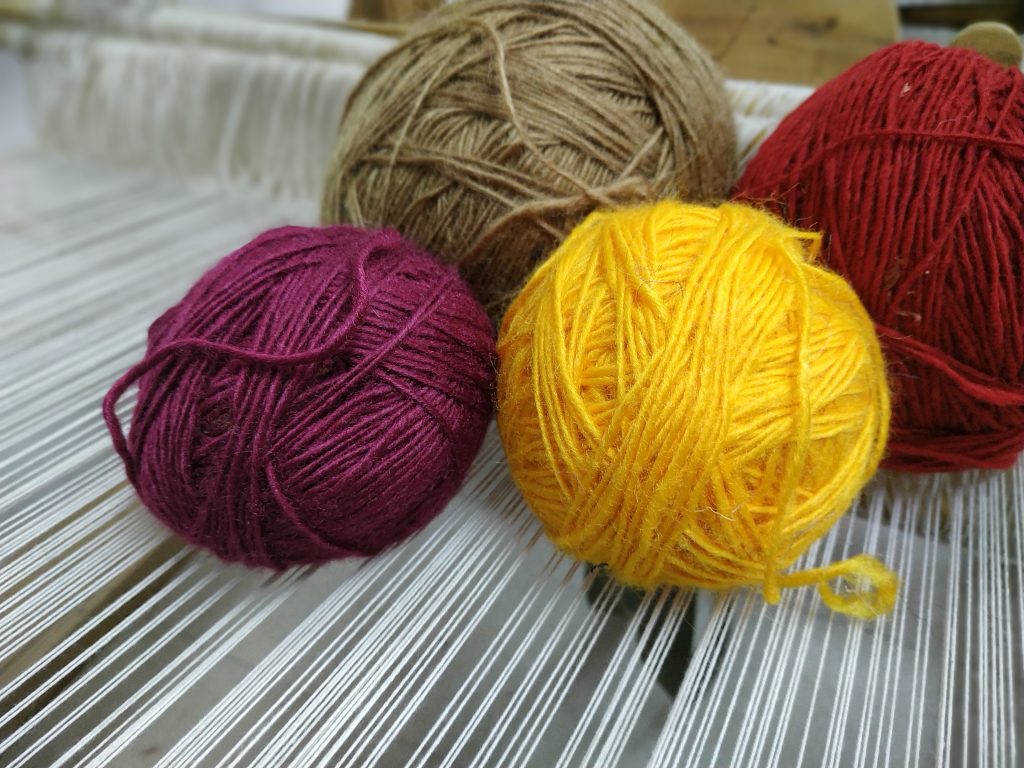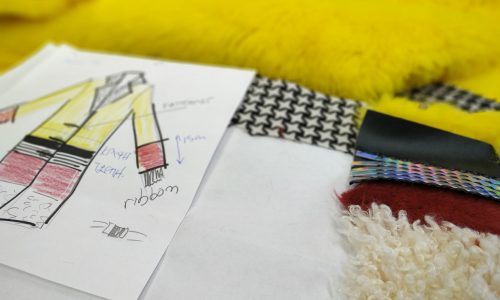Maria Vytinidou, Chemist – Conscious Fashion Designer – Fashion Entrepreneur, distinguished by Vogue Italia and Premiere Vision Paris for her entrepreneurship, creates Innovative Wearable Technology Garments and Ready-to-wear Eco Luxury Womenswear Collections with the label “Μaria Vytinidou Eco Luxury Design Brand”. She is also the head designer of “Madflax” Sustainable Fashion Brand. She uses techniques of Zero Waste and Upcycling with eco materials. Maria is also the founder of “AthensFashionClub” Fashion School, “The Fashion Gate” 1st Athens Fashion Business Incubator and “The Sustainable Floor” 1st hybrid Online Store and Co-Working Space in Fashion.
Why do you support circular/sustainable fashion?
Sustainability should be a growing concern for all the designers because of the environmental pollution. For me, Sustainable, Circular and Ethical fashion is a philosophy and a process of promoting changes in fashion products for greater ecological integrity and social justice. We consider ourselves as a part of the solution for our Planet and not as a part of the problem. So, if we all follow this concept, we produce less textile waste, save natural resources, reduce carbon footprint and succeed better wages and working conditions. In order to succeed this “revolution” in fashion we need to change the way we think and work as fashion designers and as consumers as well. Circular fashion ensures a more sustainable future for the planet and the next generations.
The future of the fashion industry depends on the proper training of young designers on sustainable techniques and new business models and the way they integrate these into the way they design and operate their businesses.

What is your main challenge implementing sustainability/circular fashion in your vocation?
The challenges in circularity are many because the quality of the garments requires durability, recyclability and generally a “green” identification. Not all of the fabrics can be recycled due to many parameters such as their mixed composition of materials, the nature of the fibers, etc. In addition, garments to be reformed or upcycled need good quality of fabrics and a lot of time to re-designed in a stylish, modern and commercial way. It is easy to add trimmings or change a sleeve on a jacket. However, is the final product attractive enough to resold and can that garment be a part of an inspired coherent fashion collection? Another challenge is also the fact that the generations Y (Millennials) and Z (Centennials) are more engaged with sustainable fashion compared with Gen X or Boomers. Therefore, it is not easy to convince people above the age of 40 to understand the capturing value of sustainability and circularity. Designers should be aware of this fact when selecting.




Describe the experience
Using Zero Waste and Upcycled techniques to create a collection can be a slow and expensive procedure for the designer. During manucacturing my first Upcycled Mensware collection I realized that is was very challenging to find the right “match” of fabrics or materials for each garment and things run not so fast as I expected. The same challenge I faced when designing a collection made of woven fabrics in traditional looms, in my homeland Crete. It is refreshing for creativity, you create unique masterpieces but on the other hand, you spend a lot of time creating the final product, which ends to a high price of sale for each garment.
What are your learnings and what advice can you share with others?
Firstly, Sustainability and Circularity starts from education. Young designers should embrace sustainability from the very first beginning during their studies in fashion schools. Being prepared for the real circumstances they will face in the fashion industry, they will be better focused to their customers and more successful as a fashion brand. Therefore, they should be well educated about the new sustainable eco materials and the way to incorporate in their collections. It is important to gain experience and get involved in sustainable Projects before graduating, to visit international trade fairs such as Premiere Vision in Paris and Modtissimo in Portugal and finally to lauch their fashion brand based on a Sustainable Business Model.


In terms of Marketing and Strategies, fashion companies should adopt a demand-focus approach, try to reduce the inventory levels and announce pre-order sales for more accurate smaller productions. Fewer yearly collections, fashion shows and shifting away from resort and cruise collections is another approach to increase sustainability. Sustainability should be a whole process for a fashion brand including designing timeless collections, selecting eco fabrics and materials, packaging, using Zero Waste, recycling and upcycling techniques, operating sustainable retail stores and creating sorting facilities. Do not forget that designing reverse logistics procedures to resale the products is very important and optimizes even more the value proposition of the sustainable fashion brand.
Any conclusions?
Still, we talk a lot about Sustainability and Circularity in fashion, but only a few brands in a global scale are engaged to it. Due to the diversity of thousands of fashion brands, it is not easy to propose and implement standard procedures for sustainable approaches in the fashion industry. In addition, this kind of change will not happen overnight for most of the fashion brands and transform their traditional linear fashion model into a circular system. Elderly consumers on the other hand, are reluctant to adopt the concept of sustainable fashion and they need education as well and encouragement from the fashion brands. Heading to Circularity and Sustainability is still a long way and it seems to involve fashion brands, customers and all the participants in the value chain. Resilience is all we need as a transition step from traditional to circular fashion.



Important notice: The above content is not approved by the European Commission.

